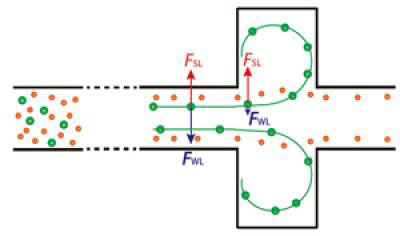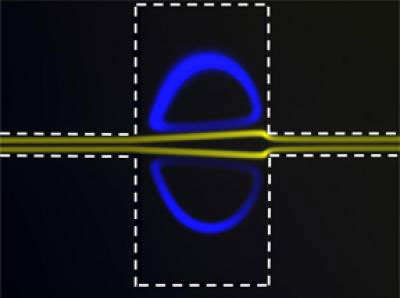|
|
|
|
 News Feeds News Feeds
|
 Join us on Facebook Join us on Facebook
|
 Follow us on Twitter Follow us on Twitter
|
|
? Posted: Sep 30th, 2011 Posted: Sep 30th, 2011 Posted: Sep 30th, 2011 Posted: Sep 30th, 2011 Posted: Sep 29th, 2011 Posted: Sep 29th, 2011 Posted: Sep 29th, 2011 Posted: Sep 29th, 2011 Posted: Sep 29th, 2011 Posted: Sep 29th, 2011 Posted: Sep 29th, 2011 Posted: Sep 29th, 2011 Posted: Sep 29th, 2011 Posted: Sep 29th, 2011 Posted: Sep 28th, 2011 Posted: Sep 28th, 2011 Posted: Sep 28th, 2011 Posted: Sep 28th, 2011 Posted: Sep 28th, 2011 Posted: Sep 28th, 2011 Posted: Sep 28th, 2011 Posted: Sep 28th, 2011 Posted: Sep 28th, 2011 Posted: Sep 27th, 2011 Posted: Sep 27th, 2011 Posted: Sep 27th, 2011 Posted: Sep 27th, 2011 Posted: Sep 27th, 2011 Posted: Sep 27th, 2011 Posted: Sep 27th, 2011 Posted: Sep 26th, 2011 Posted: Sep 26th, 2011 Posted: Sep 26th, 2011 Posted: Sep 26th, 2011 Posted: Sep 26th, 2011 Posted: Sep 26th, 2011 |
| Posted: Sep 28th, 2011 | |
| New research promises better collection of prostate cancer cells | |
| (Nanowerk News) microTAS 2011 conference, the premier international event for reporting research in microfluidics, nanotechnology and detection technologies for life science and chemistry, University of Cincinnati researchers will present a simple, low-cost, method for separating and safely collecting concentrated volumes of fragile prostate cancer cells. | |
| The research results resolve the critical technical challenge of isolating and collecting fragile cells, specifically rare circulating tumor cells (CTCs) that are present in the blood in very low concentrations ? as low as one cell in 100,000. | |
| Normally, the isolation and collection of such cells is complicated and relies on the availability of biological markers on the cells; whereas, the method developed at UC ? using inertial microfluidic lab-on-a-chip technology ? is simple, relying only on cell size for separation. UC has already obtained a provisional patent for the new inertial microfluidics device and is in the process of obtaining a full patent. | |
| At the Fifteenth International Conference on Miniaturized Systems for Chemistry and Life Sciences (microTAS) to be held Oct. 2-6, in Seattle, Wash., the research will be presented in papers titled "Extraction and Enrichment of Rare Cells in a Simple Inertial Microfluidic Device" and "Sorting Human Prostate Epithelial (HPET) Cells in an Inertial Microfluidic Device." | |
 |
|
| Device concept schematic for straight-channel inertial miccrofluidics. Lift and shear forces focus cells before the expansion or "crossroads." This balance is disrupted in the expansion region, leading to size-based cell trapping in the expansion. (Image: Ian Papautsky, University of Cincinnati) | |
| The first paper is by UC researchers Jian Zhou, engineering doctoral student, Premkumar Vummidi Giridhar, environmental health postdoctoral fellow; Susan Kasper, associate professor of environmental health; and Ian Papautsky, associate professor of engineering and director of both the BioMicroSystems Lab and the Micro/Nano Fabrication Engineering Research Center at UC. The second paper is presented by Nivedita Nivedita, doctoral student in engineering, and by Giridhar, Kasper and Papautsky. | |
| Kasper has been investigating the cancer stem cell properties of HPET cells and began collaborating with Papautsky to characterize prostate cancer stem cells and determine the manner in which these cells survive in the circulation and metastasize to their target organs such as bone. "Prostate cancer cells are a challenge to collect because they appear quite fragile and are present in very small numbers in the blood. If we damage them in the collection process, they are not viable for experimentation and the development of more effective strategies to combat this disease," Kasper adds. | |
| GENERAL BACKGROUND ON INERTIAL MICROFLUIDICS: SPIRAL AND STRAIGHT CHANNELS | |
| Inertial microfluidic lab-on-a-chip devices ? whether based on a straight or a spiral channel ? take advantage of hydrodynamic (liquid in motion) forces acting on cells or particles within laminar flow (fluid flows in parallel layers). These forces cause cells to equilibrate in streams near channel walls. The equilibrium positions of focused cells are strongly dependent on cell size, as well as flow properties and channel geometry. In spiral microchannels, these inertial forces can be influenced by centrifugal forces, adding additional control over the position of the focused streams of cells. | |
 |
|
| This image shows the size dependence of particle trapping using fluorescent particles. The superimposed fluorescent image indicates trapping of larger particles (blue rings) while smaller particles (yellow rings) pass through. (Image: Ian Papautsky, University of Cincinnati) | |
| UC's work with inertial microfluidics ? both spiral and straight channel ? is unusual because, up until now, it has proven difficult to separate cells without the introduction of external electric or magnetic forces or using immunoselection. | |
| HOW INERTIAL MICROFLUIDIC CHIPS WORK | |
| In spiral-channel lab-on-chips, a sample is introduced at the center of the spiral channel. Before the cells reach the end of the spiral, the cells focus into individual steams and are separated. Papautsky previously developed these chips for separating blood and other cell types at high throughput. | |
| However, while successful, spiral chips are not able to separate out cells present in blood in extremely low concentrations, as is the case with prostate cells. This led him to explore inertial chips with straight channel geometries. | |
| In a straight-channel inertial chip, a sample is introduced into a channel (with the diameter of a human hair) by means of a syringe. Before the cells reach the "crossroads" or "expansion" in the channel, lift and shear forces balance and focus cells into distinct groups near the sidewalls. This balance is disrupted at the "expansion" or "crossroads" and the larger cells, prostate cancer cells in this case, experience lateral velocity ? in other words, move sideways into the expansions where they are trapped for later use in experimentation. | |
| This straight-channel method can be used to effectively isolate and collect cells and particles with a concentration as low as one cell per milliliter of blood. | |
| According to UC's Papautsky, "The flow rate and channel geometry are critical to the method. We need to get the flow rate right so that the cells will separate out. We want to control the lift and shear forces that stem from the flow rate ? enough to cull out and collect the cancer cells but to avoid damaging them." | |
| METHOD HAS BROAD APPLICATIONS TO OTHER CELL TYPES | |
| While UC's experiments with inertial microfluidics focused on separating and concentrating prostate cancer cells, the approach is broadly applicable to other cell types and sizes. Working closely with Kasper, the Papautsky's group has already tested a number of other cell lines in these inertial microfluidic devices, including DU-145 cells (derived from brain metastasis) and LNCaP cells (derived from left supraclavicular lymph node). The simple planar structure of the devices and the passive mechanism of separation make them an easy-to-use tool for cell biologists, and affords integration with existing lab-on-a-chip systems. |
?
?
Source: http://www.nanowerk.com/news/newsid=22901.php
crystal cathedral new facebook layout new facebook layout yalta dancing with the stars results ron artest hpq
No comments:
Post a Comment
Note: Only a member of this blog may post a comment.